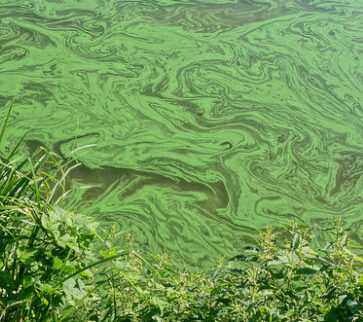Thursday, July 3, 2025
By Talia Gordner and Annik Forristal
The Ontario Ministry of Environment, Conservation and Parks has again amended the On-site and Excess Soil Management regulations under the Environmental Protection Act (the EPA), which regulates the reuse of excess soil in Ontario.
These amendments aim to clarify existing regulatory requirements, remove barriers associated with reusing low-risk soils, and generally encourage the greater reuse of excess soil in Ontario. The amendments came into effect immediately on April 23, 2024.
The Regulation provides a framework for excavating, removing, and transporting excess soil between two or more sites.
Changes for soil management sites and other regulated facilities
The April 2024 Amendments expand the current exemption for certain Class 1 Soil Management Sites, being retail landscaping soil depots (now called “landscaping soil depots”) and residential development soil sites, from the EPA requirement to obtain an Environmental Compliance Approval (ECA) for their waste management/storage operations. To qualify for this exemption, no liquid soil can be deposited at the site, the excess soil accepted and managed at and leaving the depots must meet the applicable standards and other requirements under the Soil Rules, and, in the case of excess soil deposited at a landscaping soil depot, it must be removed no later than two years from its initial deposit (unless an extension is approved by the Ministry). The amendments also provide an increase of the permitted maximum volume that can be stored at these sites from 10,000 m3 to 25,000 m3.
The amendments also enhance the ability of Class 2 Soil Management Sites to manage excess soil while retaining their ECA exemption status by increasing the permitted maximum volume of excess soil stored at Class 2 sites for non-public body operators from 10,000 m3 to 25,000 m3. The amendments further allow a public body to own or operate a Class 2 site (which was not previously permitted under the Regulation) without any quantity limits for managing dry excess soil.
In order to better align other regulated facilities with Class 2 Soil Management Sites, the amendments also provide that Local Waste Transfer Facilities may store up to a maximum of 10,000 m3 of liquid soil and 25,000 m3 of total excess soil (dry and liquid) for up to 2 years (which may be extended with Ministry approval). The maximum soil storage limit does not apply to Local Waste Transfer Facilities owned or controlled by public bodies.
Greater reuse opportunities for salt-impacted soil
The April 2024 Amendments increase the reuse opportunities for salt-impacted soil in areas where such soil is anticipated to have minimal impact. The reuse of salt-impacted soil is permitted anywhere on industrial and commercial properties as well as at community, institutional, parkland, and residential use properties either within 1.5 metres below the soil surface based on a landscape or site plan prepared and certified by an expert identifying areas and depths at which salt-impacted soil can be used without affecting existing or future vegetation or 1.5 metres below the soil surface. There is a further exemption from the landscape plan requirement for community, institutional, parkland, and residential use properties for public bodies that have a policy in place related to the use of salt-impacted soil at reuse sites they own and control.
The April 2024 Amendments also allow salt-impacted soil to be placed 1.5 metres below the soil surface at agricultural properties generally and within 1.5 metres below surface if used for a specified built use such as fill for buildings, driveways or barns. There are additional source site disclosure obligations as well as written acceptance requirements that must be obtained by the source site from the reuse site where salt-impacted soil is provided.
Hauling record clarifications and exemptions
The April 2024 Amendments clarify what information needs to be provided within hauling records under section 18 of the Regulation and outright remove the hauling record requirement:
(a) if dry excess soil is being directly transported from the project area where the total amount of soil to be removed from the project area is 5 m3 or less;
(b) if dry excess soil is being transported to a reuse site for final placement where the total amount of excess soil required for the reuse site is 5 m3 or less; or
(c) where the excess soil being transported is a packaged landscaping or gardening product. The hauler would still be required to have sufficient information to provide verbal information about the soil being transported in these three circumstances.
Exemptions for designated landscaping projects
The April 2024 Amendments add an exemption under Schedule 2 of the Regulation for landscape projects excavating soil at a low-risk part of an Enhanced Investigation Project Area. The exemption applies to projects excavating 100 m3 or less of excess soil from an area within an Enhanced Investigation Project Area that has been assessed by a QP who opines that the area from which the soil will be excavated is not likely to have been affected by the discharge of a contaminant. These landscaping projects are limited to landscape care and maintenance services, including installing or replacing lamp posts, light poles, trees, shrubs, plants, lawns or gardens, and the construction of walkways, retaining walls, decks, fences and ponds.
Additional amendments
In addition to minor corrections and clarification type amendments and the changes to the Regulation required to implement the amendments described above, the following are some additional changes to be aware of:
- Clarifications for Qualified Person (“QP”) liquid soil responsibilities: The April 2024 Amendments clarify that a QP is not required to confirm there will be no adverse effect from the use of a polymer to solidify liquid excess soil and instead must undertake reasonable investigations to identity any such concerns.
- Clarifications for sampling & analysis requirements: The April 2024 Amendments clarify requirements relating to certain mandatory sampling and analysis plans for salt-impacted soil, stormwater management pond sampling, and tunnelling projects.
- Increased flexibility for soil storage near waterbodies: For soil storage or excavating projects, the April 2024 Amendments allow very temporary soil storage within 30 m of a water body where: (a) the soil was excavated from near the shoreline, close to the waterbody, riparian area, or land adjacent to the water body; and (b) the potential adverse impacts to the water body are mitigated.
- Soil finally deposited at landfills: The April 2024 Amendments do not designate excess soil finally deposited at a landfill property as waste if it is for a beneficial purpose consistent with the landfill’s waste ECA.
A Cautionary Note: The foregoing provides only an overview and does not constitute legal advice. Readers are cautioned against making any decisions based on this material alone. Rather, specific legal advice should be obtained.
Talia Gordner is an experienced lawyer with a corporate and commercial litigation practice focused on the resolution of complex environmental, regulatory and real estate disputes.
Annik Forristal is a Group Head of McMillan’s National Infrastructure and Construction Group whose practice is dedicated to the construction, infrastructure and development industries.













